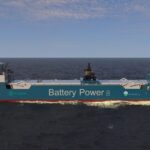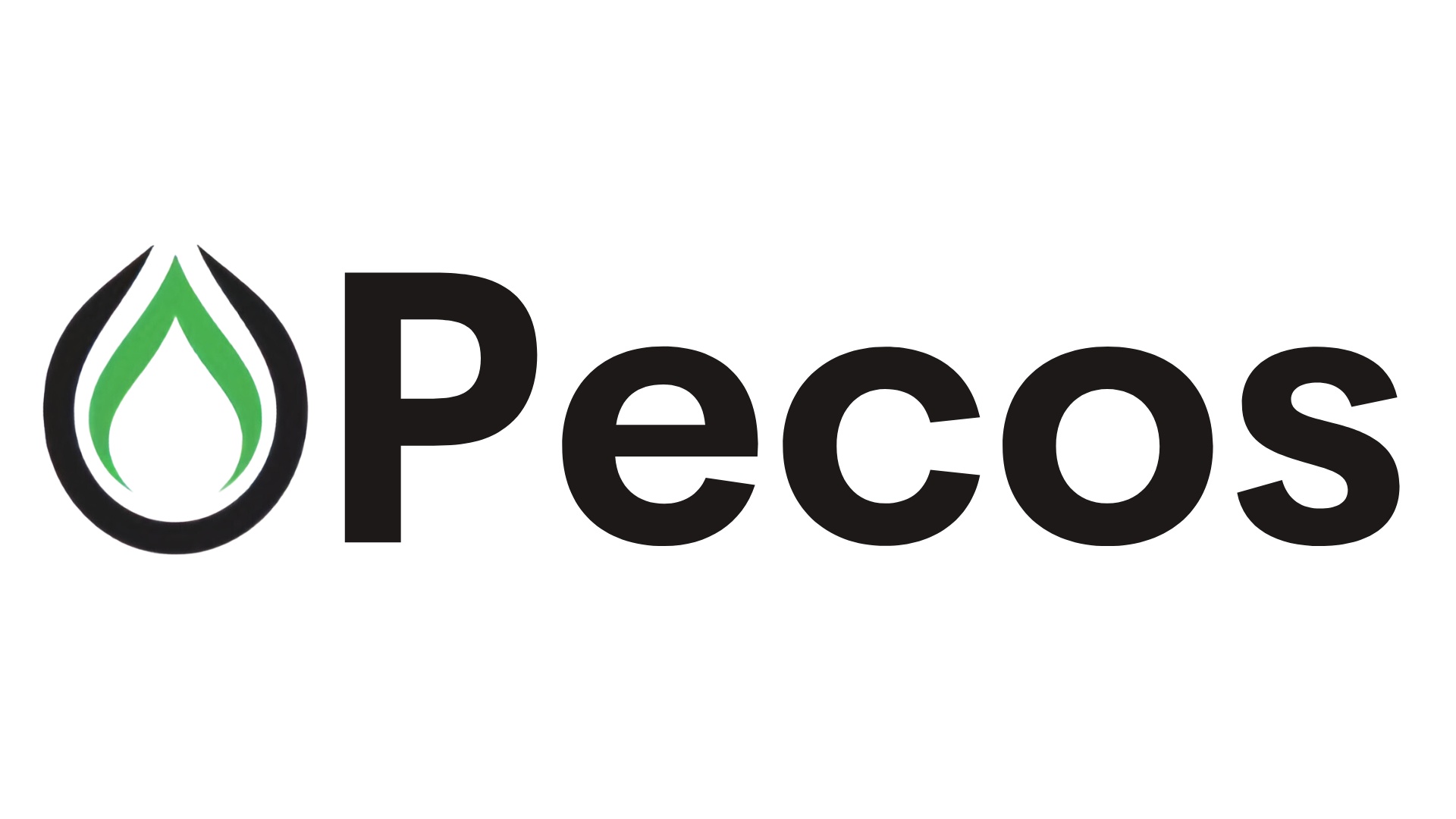Energy News Beat
Daily Standup Top Stories
Redrawing of global energy markets map set to heap benefits on US
The prospects of peace and the return of Russian gas looks likely to serve the interests of Donald Trump The Kremlin’s invasion of Ukraine three years ago has reverberated through the global energy industry; unravelling Europe’s […]
Trump’s Energy Czar Has Plan to ‘Map, Baby, Map’ US Oil Bounty
Burgum suggests stronger USGS role to analyze the potential Says US public lands hold natural resources worth trillions Interior Secretary Doug Burgum touted a plan for mapping deposits of oil, gas and critical minerals on US federal […]
Is the West Losing the Race for Uranium?
The world is experiencing a nuclear energy renaissance, with global capacity expanding and driving a significant increase in uranium demand. China and Russia have secured substantial uranium supplies, particularly from key producers like Kazakhstan, creating […]
U.S. LNG Exports Surge But Long-Term Growth Uncertain
The United States leads in LNG exports, but Qatar’s plans to double its output capacity by 2030 pose a major competitive threat. Investors are becoming hesitant to commit to long-term LNG deals due to concerns […]
ConocoPhillips to sell interest in Gulf of America assets to Shell for $735 million
ENB Pub Note: I had to change the title to “Gulf of America” as World Oil published with “Gulf of Mexico” – just trying to help. ConocoPhillips will sell its interests in the Gulf of […]
Diamondback Energy to expand in Permian basin with $4.08 billion deal
Feb 18 (Reuters) – Diamondback Energy (FANG.O) said on Tuesday it would buy certain units of EnCap Investments-backed energy producer Double Eagle for $4.08 billion in cash and stock, expanding its presence in the oil-rich […]
Highlights of the Podcast
00:00 – Intro
01:17 – Redrawing of global energy markets map set to heap benefits on US
03:23 – Trump’s Energy Czar Has Plan to ‘Map, Baby, Map’ US Oil Bounty
06:00 – Is the West Losing the Race for Uranium?
07:32 – U.S. LNG Exports Surge But Long-Term Growth Uncertain
12:01 – Markets Update
13:10 – Rig Count Update
14:39 – ConocoPhillips to sell interest in Gulf of America assets to Shell for $735 million
15:45 – Diamondback Energy to expand in Permian basin with $4.08 billion deal
18:30 – Outro
Follow Michael On LinkedIn and Twitter
– Get in Contact With The Show –
Video Transcription edited for grammar. We disavow any errors unless they make us look better or smarter.
Michael Tanner: [00:00:09] What’s going on, everybody. Welcome into the Monday, February 24th, 2024 edition of the Daily Energy Newsbeat stand up. Here are today’s top headlines. First up, redrawing of the global energy markets maps set to help heap benefits on the United States. Super interesting one. Speaking on that political train, Trump’s energy czar has planned to map baby map U .S. oil bounty. And then next up is the West losing the race for uranium. We’ll finish up in the United States, U .S. LNG export surge, but long term growth on Sir Stu will then pop it over for me. I will quickly cover what happened in the oil and gas markets touch on recount. And then we saw two M &A deals happen last week. I was gone for the diamond back double eagle deal, so I will quickly cover that. But then we also must cover Conoco Phillips shedding off their Gulf of America assets to shell for about 700 million. We will cover all that and a bag of chips, guys. As always, I’m Michael Tanner, joined by Stuart Turley. Where do you want to begin? [00:01:17][67.9]
Stuart Turley: [00:01:17] Hey, let’s start with redrawing of global energy markets map set to heap benefits on the U .S. This has been a long time rolling around here. This article is out of the Guardian, I believe. And they’ve got an they did an outstanding job on this one. Now, the Kremlin’s invasion of Ukraine three years ago went all the way through the global energy industry. And it basically fed into Germany. Michael, Germany is just now having their election. It looks like the right is gaining a little power. But the key point to this article is that the natural gas and LNG markets are already pricing in a into the Russian war, and that people are going to want to start buying Russian natural gas again, just kind of like we talked about. So this is pretty big from that standpoint, you cannot go through green energy policies without cheap natural gas and nuclear, net zero will never happen without them. [00:02:23][11.9]
Michael Tanner: [00:02:23] No, and you got to remember guys, imports of Russian natural gas via pipes accounted for about a third of European gas demand in 2021, before the start of Moscow’s war in Ukraine. I’m reading here straight from the article Russia provided just over half of all the gas consumed in Germany, which relies pretty heavily on gas for about more than a quarter of its energy. So they’re still up a creek without a paddle with all this stuff. [00:02:47][23.6]
Stuart Turley: [00:02:47] Oh, they are incredibly. And then the other side of this is Norway is now looking at how they do. Now, Norway’s got lots of hydro to do their own stuff. They’re the largest EU supplier to natural gas now. So Norway, but now the interconnects to the UK for electricity, they’re wanting to break those interconnects. So energy security, really, you’ve got to control it from your own country. Don’t go down that interconnect road. [00:03:20][33.1]
Michael Tanner: [00:03:21] No, absolutely. All right. What’s next? Let’s bring it home. [00:03:23][2.2]
Stuart Turley: [00:03:23] Let’s go to Mr. Trump’s energy czar has a plan to map baby map. I got tickled at this story with Doug Burgum at CPAC. Burgum suggests stronger USGS role to analyze the potential. And when you take a look at it, the US has thirty six point five trillion in debt, but unlimited knowledge about the value of America’s assets, Burgum says. But in the Trump administration, we’re going to build that balance sheet as we have trillions and trillions of dollars worth of natural resources. And we’re going to make sure we understand that those are our assets to be out exceed the debt that we have. I like the way that they’re thinking, Michael. And I think that they’re setting this up for long term a profits for the government profits for the US citizens and opportunities for oil and gas operators to work on federal lands. I think this is phenomenal. [00:04:21][57.6]
Michael Tanner: [00:04:21] Yeah. Now, I think what they’re talking more about is a reference to critical minerals and things of that nature. I think it’s pretty done well and cooked where the oil is, to use a phrase like I think we know where all the oil is. Do we know where all the uranium is? Do we know where all the critical minerals are that we could be using that can be advanced in to build up our own semiconductor business, to build up all of these other businesses that we’re live on? I think that’s really the main focus of this. [00:04:49][27.2]
Stuart Turley: [00:04:49] Oh, yeah, I agree. But in Alaska, on federal lands, there is still a ton that has yet to be explored out. So they there is a lot. [00:04:57][7.6]
Michael Tanner: [00:04:58] It depends on where you’re saying explored versus no, there’s oil. There are two. There’s a distinction there because if the price of oil ever shot up, we would go start exploring for places we think there’s oil. I’m absolutely going to take you so far. The only one way to figure out if there’s oil somewhere is drill a hole or go build a mine somewhere. So a map will only take you so far. And exploration becomes more more likely as prices rise. It’s one of the reasons why when prices rise, people go find a drill from oil and it drives them the price down and we see that balance again. I think this has a lot to do with critical. But this is this is, you know, pun intended, a critical thing for us to be doing because all that stuff on federal land does belong to the federal taxpayer. And if we’re not exploiting it and if it’s not going to be used to benefit, if it’s going if it can be used to benefit us, it’s a great thing. So I’m all for this specifically because, you know, if you do want to build up your own semiconductor industry in the United States, critical minerals are pun intended critical. [00:05:58][60.4]
Stuart Turley: [00:05:59] Exactly. And looking at the next article is the West losing the race for uranium. I like this article as well. This one came from Haley Zemrayer from OilPrice .com. The world’s experienced nuclear energy renaissance, which is pretty cool. There’s a quote in here from Faith Bristol that is actually kind of worthless. But will Russian and Chinese players have been keen to secure access to resources in Central Asia and Africa, creating a very aggressive, competitive environment? Benjamin Godwin at Prismic Strategic Intelligence recently told the Financial Times, Huge supplies in Kazakhstan are routing their uranium supplies to Beijing and the Kremlin, leaving North America and Europe scrambling. So this these two articles go hand in hand. And I just want to give Chris Wright a shout out because he’s saying that as the Energy Secretary working closely with Doug Burgum, they’re going to be build baby build, you know, as opposed to drill baby drill, build baby build is what his thought was. All right. But I think this is going to be pretty darn cool. [00:07:06][67.4]
Michael Tanner: [00:07:07] No, I think it’s it’s super interesting. And again, you just had some great interviews that are coming out with some nuclear folks that I know they’ll touch on all of this stuff. [00:07:15][8.4]
Stuart Turley: [00:07:16] Absolutely. In fact, our folks over there at Nano Nuclear are just way cool. Steve is the CEO over there and Jay, you is the founder. Good, good people watch them. They’re now on NASDAQ and going places. Let’s go to the next story. U .S. LNG export surge, but is long term growth uncertain. The United States leads LNG export, but Qatar’s plans to double output and capacity by 2030 is a major competitive threat. Yeah, they can approve things a little faster in that one. The king goes, yes, the Europe’s LNG imports have declined. So maybe King Trump can go. Yes, that was a joke, by the way. Europe’s LNG exports have declined within increased effort. Now, when we take a look at I think LNG is going to be President Trump’s ace in the hole for offsetting the tariffs. You know, and I think that that’s going to be a major part of his thing, just like Japan last week. [00:08:18][61.7]
Michael Tanner: [00:08:18] No, absolutely. And you’re going to have to figure out a way to get all of this LNG economically over to all of these individual countries that want it. I mean, we know the first is building the infrastructure, but then setting up the economic incentives for a lot of this stuff to get set. You know, I do think our LNG, I do agree with the sentiment in this article that eventually our LNG capacity is going to plateau because it’s an infrastructure problem. Qatar, all of these Middle Eastern countries are thinking in 30, 50 year increments. We don’t necessarily do that. The largest we tend to think is some is sometime about 20 years. I was standpoint of where our infrastructure needs to be relative to where it needs to go for us to continue to dominate the LNG space. I think it’ll be interesting, but I do think what you’re going to see is the demand for natural gas at home is going to continue to rise as AI continues to be big. I mean, you know, three weeks ago, DeepSeek basically said power was useless for their models. And it’s not not the case, but that was the sentiment around it that, oh, we don’t need all these data centers. Now we can only cost five million dollars to train these models. Then Grok3 just came out and that was trained on Colossus, which was the largest data center in Memphis. And that has, you know, has surpassed all of the benchmarks between OpenAI and what Meta are doing and even DeepSeek. So now everyone’s like, oh, we need bigger data centers again. So it’s a constant give and take with all this stuff. So I think LNG exports may flatline, but we will continue to use natural gas in the United States heavily. [00:09:41][82.6]
Stuart Turley: [00:09:41] I think as more people get used to LNG and LNG to energy plants come online, you’re going to see that that still is going to help that infrastructure out. I think LNG to power plants in Africa would be extremely cool. [00:09:57][16.7]
Michael Tanner: [00:09:58] It would. It definitely would. But that’s it. Now that’s a grid problem. [00:10:01][3.3]
Stuart Turley: [00:10:02] Exactly. Which came first. [00:10:03][1.1]
Michael Tanner: [00:10:04] Yeah, exactly. Exactly. So, all right, well, let’s jump over and talk finance guys before we do that. Let’s quickly pay the bills as always. Thank you for checking us out here on the world’s greatest website, www .energynewsbeat .com, the best place for all your energy and oil and gas news. Stu and the team do a tremendous job making sure that website stays up to speed. Everything you need to know to be the tip of the spear when it comes to the energy and the oil and gas business. Go ahead and hit that description below. All the links to the timestamps, links to the articles. You can also check us out on Substack, theenergynewsbeat .substack .com. We are dropping a bunch of great paid only articles. Probably one of the best ways to support the show is go check us out and sign up for a paid subscription via Substack. We also like to thank sponsor of the show, Reese Energy Consulting and our friends over there. Guys, if you’re an oil and gas upstream company and you’re not working with an oil and gas marketing company, I promise you you’re leaving money on the table. Your purchasers are taking advantage of you. Your midstream contracts aren’t as great as they could be, and you’re leaving money on the table. Go call our friends at Reese Energy Consulting. They’ll hook us up. They’ll give you a second run through. Also, if you’re in the LNG space, you’re trying to get an LNG permit spun up, you’re interested in maybe trying to build a new pipeline. Go call them up. They’re end -to -end support for all things natural gas. We highly, highly recommend them. We thank them for supporting the show. And as always, guys, if you are attempting to become Billy Bob Thornton from Landman, we say we have a solution. It’s invest in oil and gas and become Billy Bob Thornton from Landman. Go to investinoil .energynewsbeat .com and we will send you all the information that you would need to know to be at the tip of the spear on how to become Billy Bob Thornton from Landman. You’re going to save a little bit on your taxes. You’re going to get a nice little monthly distribution. And of course, as mentioned, you will get to walk around all your parties and say, guess what? I’m a Landman. I deal with the cartel. I’ve built a road. Whatever story you want to concoct around Landman, you have the ability to do that because you are now an oil man. So again, that’s investinoil .energynewsbeat .com. But let’s go ahead and jump over, Stu. [00:12:01][117.8]
Michael Tanner: [00:12:01] Let’s go ahead and look at how the markets have done. A lot of red on Friday. A lot of red I’m seeing on the board here. S &P 500 down about 1 .7 percentage points. NASDAQ down two percentage points overall. Two and 10 -year yields down 1 .6 and 1 .7 respectively. Dollar index shot up about three -tenths of a percentage point. Bitcoin at 95 .8. So that’s down about a percent over the weekend. Crude oil lost about 2 .8 percentage points down two full dollars down to 70 .40 and looks to open a little bit shallower than that. Brent oil lost about 69 cents or about a full percentage point down to 74 .37. Natural gas spiked after that Arctic freeze rolled through. It closed at $4 .23 or up about 8 cents from where it started day over day. Crude down that $2 I think is really the headline here. Really, I think there’s a lot of different factors. Obviously, there was some geopolitical risk as the ceasefire that has occurred in the Middle East is now holding. And so I think there’s some geopolitical risk there, specifically from oil that gets transported from the Red Sea. [00:13:10][68.3]
[00:13:10] We did actually see four rigs increase. If you can throw that picture up on the rig count, we did see that happen. So we did see plus four rigs. And I think people are also, again, I think the third qualm with that is the fact that there most likely is going to be a peace deal in Ukraine. I think people are fairly optimistic that President Trump and his administration will be able to get something done, whether or not it gets accepted by either side remains to be seen. And it is pretty interesting. We did see some pipeline damage in Russia that has caused a little bit of a supply crunch, but we really haven’t seen that shake out in the markets. We also did see again on Wednesday an uptick on US crude oil stockpiles, or excuse me, we saw that on Thursday due to the fact that we had Monday was President’s Day. So that also basically has held prices down. So things have been slightly interesting. I think if you read all the sentiment, all eyes really are on Ukraine. The funny part is people say that a peace deal is around the corner. Well, the problem is Trump and Putin can negotiate and come to agreement all they want. The real question is, will Zelensky take it? And it seems to be some… From all of the comments coming out of Ukraine from Zelensky and his team, it seems like he’s not going to take a deal that he’s not involved with, which is going to make things, I think, super interesting. What that means for energy is I think there is some geopolitical premium risk there, but it’s waning as we get closer to that. The other two things that I just want to lightly touch on were two deals that happened. [00:14:39][88.4]
Michael Tanner: [00:14:39] First, ConocoPhillips decides to sell its interest in some Gulf of America assets to Shell for about $735 million. We went ahead and changed it to Gulf of America just because that’s what we do here. We’re idiots. But to give you guys an idea, ConocoPhillips sold its Gulf of America assets in the EURSA and Europa fields to Shell for about $735 million. ConocoPhillips continues along its path to reduce by about $2 billion of non -core assets. On a full year 2024 cycle, these assets with ConocoPhillips was about a 15 .96 % interest in the EURSA field and about a 1 % interest in the Europa field and accounted for about 8 ,000 BOE per day. That increases on Shell’s side, that increases them to about 45 or to about 61 % working interest in the EURSA platform, which is basically Shell wants to dive more into its deep water assets, where I think Conoco is focusing a lot on some of the onshore stuff. They spent a lot of money to buy, specifically talking about Marathon and then obviously going back to some of its previous acquisitions. [00:15:44][65.2]
Michael Tanner: [00:15:45] We talked about this last Sunday. I was off for most of the week, but Diamondback went ahead and did go and gobble up Double Eagle for about $4 .08 billion in cash and stock, about $3 billion in cash and about $1 billion in shares over there. I think what was interesting was Diamondback kept touting that it gave them access to about 40 ,000 net acres that are in the core of the Midland Basin, which is one of the last large assets available and consolidated in the Basin. The interesting part though is trading has been relatively muted on Diamondback’s front from the standpoint of it seems like the deal, quote unquote, the analysts believe was a little expensive. Some of the math shows it was $7 million a stick. Others would say it was about $55 ,000 a flowing barrel. Both numbers are big. The question was not whether or not it was a bad deal or not. The question is, what does Diamondback know that we don’t know? I would argue that what Diamondback is most likely arguing and seeing is that there aren’t any other really big consolidated assets left to be purchased in what they would consider as the core of the Midland Basin. And so the real question is now, okay, if this is the last one available, now you got to over pay for it. It’s a little bit like, again, it’s like buying a house. If there’s one house available where you want to live, you’ll bid it up higher than you might want to ultimately go because it’s the last of what you consider the best homes available. They’re no different these oil and gas deals. So I think it’s going to be interesting. I think, again, a lot of people were saying this asset was overpaid for. I’m not going to go that far because again, I’m going to trust that Diamondback, who has had a history of great acquisitions, knows something about this acreage that I don’t. Any comments, Stu, on anything I talked [00:17:24][99.1]
Stuart Turley: [00:17:25] about? Oh, no, I think that it’s pretty exciting to see some good management and good numbers. We’ll keep watching those numbers. And your comment about Zelensky, I’ve been doing a lot of the long form comments with George McMillan and he and I have got some great feedback that his insights are accurate. And I think Zelensky and Kermit the Frog have a lot in common. They’re both muppets. They’re not, I mean, he is absolutely a disgusting [00:17:53][28.8]
Michael Tanner: [00:17:54] leader of a country. Yeah. And it remains to be seen if he’s going to ever, if he’s going to take a peace deal or not. So it’s going to be super interesting. But what should people be worried about this week? Scare us a little bit. Oh, I don’t want to just put anybody in [00:18:09][14.8]
Stuart Turley: [00:18:09] scare. I’m very excited. In fact, I really enjoyed the article that you read on World Oil because, you know, changing it from, they put the Gulf of Mexico and I’m sorry, it is Gulf [00:18:21][11.4]
Michael Tanner: [00:18:21] America. Gulf of America, baby. We love it. Why, guys? With that, we’ll let you get out here. Get back to work. Thank you for checking us out here on the Energy News Beat podcast that starts your week. For Stuart Turley, I’m Michael Tanner. We’ll see you tomorrow, folks. [00:18:21][0.0][958.5]
The post Charting U.S. Oil Future appeared first on Energy News Beat.









